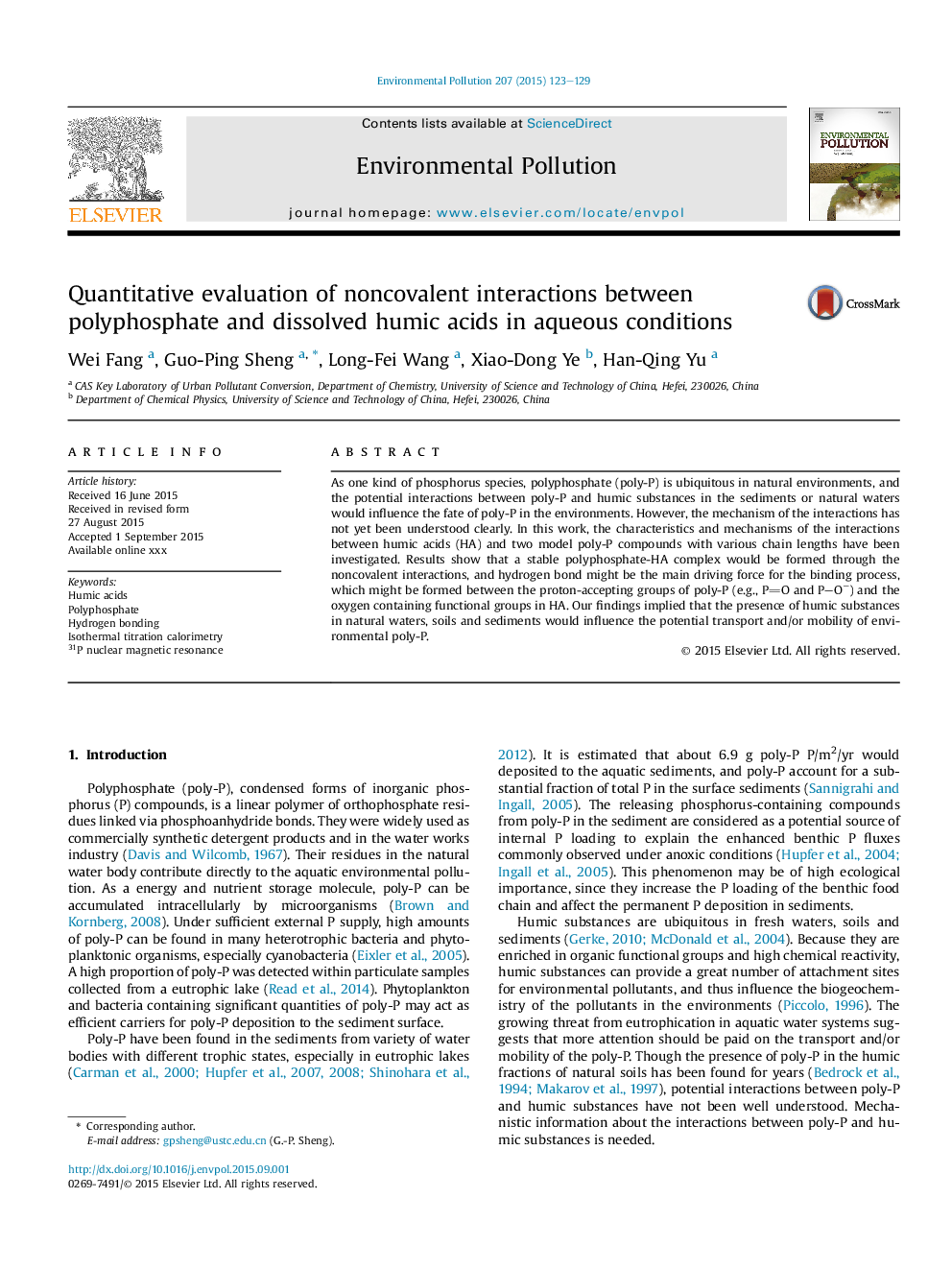| Article ID | Journal | Published Year | Pages | File Type |
|---|---|---|---|---|
| 6316137 | Environmental Pollution | 2015 | 7 Pages |
Abstract
As one kind of phosphorus species, polyphosphate (poly-P) is ubiquitous in natural environments, and the potential interactions between poly-P and humic substances in the sediments or natural waters would influence the fate of poly-P in the environments. However, the mechanism of the interactions has not yet been understood clearly. In this work, the characteristics and mechanisms of the interactions between humic acids (HA) and two model poly-P compounds with various chain lengths have been investigated. Results show that a stable polyphosphate-HA complex would be formed through the noncovalent interactions, and hydrogen bond might be the main driving force for the binding process, which might be formed between the proton-accepting groups of poly-P (e.g., PO and P-Oâ) and the oxygen containing functional groups in HA. Our findings implied that the presence of humic substances in natural waters, soils and sediments would influence the potential transport and/or mobility of environmental poly-P.
Keywords
Related Topics
Life Sciences
Environmental Science
Environmental Chemistry
Authors
Wei Fang, Guo-Ping Sheng, Long-Fei Wang, Xiao-Dong Ye, Han-Qing Yu,
